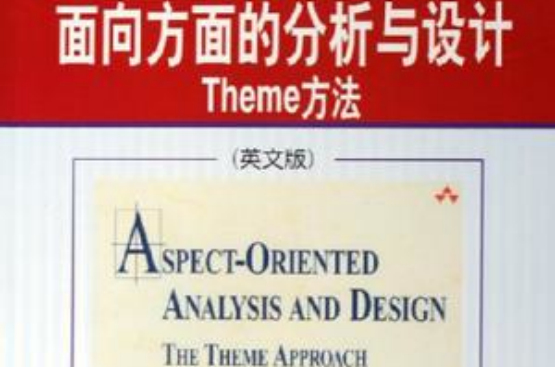《面向方面的分析與設計》是2006年機械工業出版社出版的圖書,作者是克拉克。
基本介紹
- 書名:面向方面的分析與設計
- 作者:克拉克
- ISBN:9787111179757
- 頁數:366
- 定價:49.00元
- 出版社:機械工業出版社
- 出版時間:2006-1
內容簡介,目錄,
內容簡介
面向方面軟體開發 (aspect-oriented software development,AOSD) 可以將複雜系統的多個關注點分別表達,而後利用"編織"技術將各個獨立的表達合成為一致的系統。許多專家認為AOSD是面向對象范型的後繼者,它大大地簡化了複雜系統的開發。
兩位作者都是AOSD的專家,她們在本書中將理論套用到實際的開發中。她們解釋了各種類型的方面,幫助讀者識別方面,並提供了設計和實現方面的一些指導。該方法可集成到各種軟體開發過程中,簡化軟體系統的開發。
對於迷惑於一些常見的問題 (如"何為方面?"、"應該對哪些方面編寫代碼?"、"如何設計方面?") 的開發者來說,本書非常有用。本書可作為讀者思考方面的起點,並有助於讀者在需求分析和設計中解決相關的問題。
同時,有經驗的AO開發者也可以更深入地了解各種不同的分解模型,以及如何在需求文檔中識別方面功能、設計方面、將方面映射到實現等。作者建立的Theme方法可以靈活地識別方面功能,還提供了基於UML的設計建模語言來描述方面。
簡言之,本書對開發者和分析設計者而言,都有很實際的價值。
目錄
Preface
Acknowledgments
About the Authors
Chapter 1 Introduction
Software Development and the Object-Oriented Paradigm
The Case for Aspects
What Is an Aspect?
Why Consider Aspects in Analysis and Design?
Aspects and Other Concerns
Asymmetric Separation
Symmetric Separation
The Theme Approach
What ls a Theme?
Relationships Between Themes
Concept Sharing
Crossuutting
Applying the Theme Approach
Analyzing Requirements with Theme/Doc
Starting Out
Theme Identification
Aspect Identification
Designing Themes with Theme/UML
Design the Themes
Specify the Relationships
Theme: Symmetric or Asymmetric?
Fitting Theme into Your Existing Development Process
What About Implementation?
Summary
Chapter 2 The Object-Oriented Way
Differing Unitscof Interest
Describing Requirements
Requirements Units
Motivation for Choosing Units
Describing Objects
Object-Oriented Units
Motivation for Choosing Units
Comparing Requirements to Objects
Expressions Example
Object-Oriencted Design
Requirements Scattered and Tangledcin the EES Design
Accommodating Evolution
Scattering and Tangling with Design Patterns
Evolution the Object-Oriented Way
Summary
Chapter 3 The Theme Approach
Chapter 4 Analysis
Chapter 5 Theme Design
Chapter 6 Theme Composition
Chapter 7 Map to Implementation
Chapter 8 Case Study: Phone Features
Chapter 9 Case Study:Usage Licensing
Appendix The Crystal Game
Bibliography
Index
Acknowledgments
About the Authors
Chapter 1 Introduction
Software Development and the Object-Oriented Paradigm
The Case for Aspects
What Is an Aspect?
Why Consider Aspects in Analysis and Design?
Aspects and Other Concerns
Asymmetric Separation
Symmetric Separation
The Theme Approach
What ls a Theme?
Relationships Between Themes
Concept Sharing
Crossuutting
Applying the Theme Approach
Analyzing Requirements with Theme/Doc
Starting Out
Theme Identification
Aspect Identification
Designing Themes with Theme/UML
Design the Themes
Specify the Relationships
Theme: Symmetric or Asymmetric?
Fitting Theme into Your Existing Development Process
What About Implementation?
Summary
Chapter 2 The Object-Oriented Way
Differing Unitscof Interest
Describing Requirements
Requirements Units
Motivation for Choosing Units
Describing Objects
Object-Oriented Units
Motivation for Choosing Units
Comparing Requirements to Objects
Expressions Example
Object-Oriencted Design
Requirements Scattered and Tangledcin the EES Design
Accommodating Evolution
Scattering and Tangling with Design Patterns
Evolution the Object-Oriented Way
Summary
Chapter 3 The Theme Approach
Chapter 4 Analysis
Chapter 5 Theme Design
Chapter 6 Theme Composition
Chapter 7 Map to Implementation
Chapter 8 Case Study: Phone Features
Chapter 9 Case Study:Usage Licensing
Appendix The Crystal Game
Bibliography
Index

